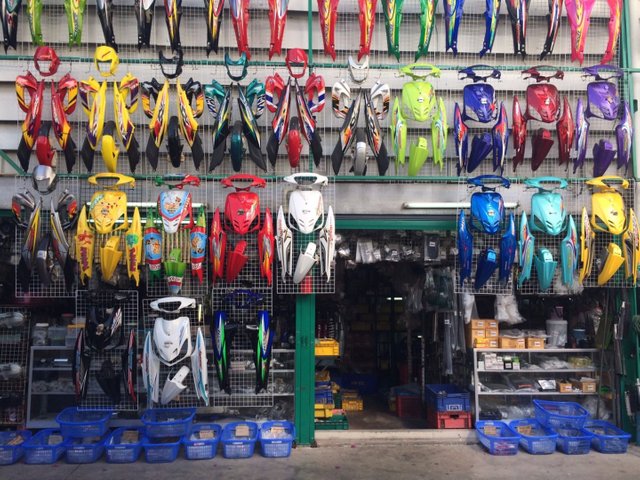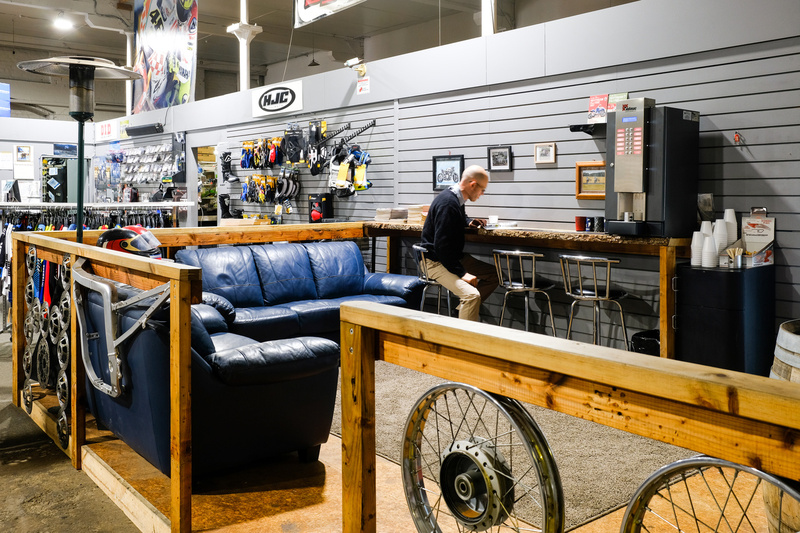Shop the very best MX Parts NZ for Your High-Performance Bike
Shop the very best MX Parts NZ for Your High-Performance Bike
Blog Article
Comprehending the Crucial Parts of a Motorcycle: A Comprehensive Overview for Fanatics
For motorbike fanatics looking to boost their riding experience and guarantee their bikes run efficiently, understanding the vital parts of a motorbike is extremely important. Each element, from the engine's intricate operations to the vital duty of the stopping mechanisms, not just influences efficiency yet likewise safety and security and comfort.
Engine Elements

The camshaft plays a vital duty in managing the timing of the engine's shutoffs, guaranteeing the specific opening and closing required for effective gas and air intake, as well as exhaust expulsion. This timing is critical to maintaining optimal engine efficiency and performance. Additionally, the carburetor or gas shot system, depending upon the motorcycle model, is accountable for mixing air with gas in the correct ratio for combustion.
The cooling system, either air or liquid-based, works to preserve the engine's temperature within operational limitations, stopping getting too hot and making sure long life - motocross gear. Each part, thoroughly developed and incorporated, adds to the seamless procedure of the engine, defining the motorbike's power output and total efficiency
Transmission System
Integral to the bike's performance, the transmission system makes sure effective power transfer from the engine to the wheels. This system consists of a number of important components, including the clutch, transmission, and final drive, each playing a vital function in translating the engine's power right into movement. The clutch, typically operated by a hand bar, serves to engage and disengage the engine from the transmission, permitting smooth equipment changes and controlled acceleration.
The transmission, frequently described as the transmission appropriate, contains a set of gears that riders can manually change via to adjust the bike's speed and torque outcome. These gears are prepared in a series that makes it possible for the motorcycle to accelerate smoothly and keep optimal engine performance across various speeds. Many motorcycles make use of a sequential gearbox, needing the biker to change gears in a fixed order.
Braking Devices
While understanding the transmission system is vital to taking advantage of a motorcycle's power, just as vital is the ability to manage and stop that power effectively, which is where stopping mechanisms enter into play. Brakes are critical for safety and security and performance, supplying the motorcyclist with the required control to navigate numerous surfaces and problems. Usually, bikes feature two kinds of braking systems: disc brakes and drum brakes.
Disc brakes are more widespread in modern-day read this article bikes as a result of their exceptional efficiency. They are composed of a brake disc, caliper, and pads. When turned on, the caliper squeezes the brake pads versus the spinning disc, converting kinetic energy into warm, thus slowing the wheel. This system provides better heat dissipation, consistent efficiency, and improved stopping power, especially in wet conditions.
Conversely, drum brakes, though less common, are still discovered in some bikes. They function by pushing Visit Website brake shoes against the internal surface of a drum connected to the wheel. While usually less reliable in warmth dissipation and quiting power, drum brakes are less complex and more economical.
Understanding these stopping systems' subtleties allows bikers to preserve their motorbikes correctly and appreciate the engineering that makes certain secure and reliable quiting.
Suspension and Guiding
Suspension and steering systems are crucial parts that dramatically affect a motorbike's handling and adventure convenience. The shock absorber, being composed of forks at the front and shock absorbers at the back, soaks up roadway abnormalities, boosting stability and control. Front forks, typically telescopic or upside down, compress and rebound to alleviate effects, while rear shock absorbers maintain tire call with the roadway, vital for grip and safety.
Steering, centered around the handlebars, links the rider to the motorcycle's directional control. The guiding head bearings make certain smooth procedure, enabling specific ability to move. Appropriate placement and maintenance of these bearings are essential for predictable guiding feedback and lowering motorcyclist tiredness.
The suspension's adjustability is another critical facet; preload, damping, and rebound settings allow customization to suit numerous riding designs and conditions. This adaptability is crucial for enhancing performance, whether browsing metropolitan roads or dealing with rugged routes. Technologies like digital suspension systems supply real-time changes, improving trip quality throughout varied surfaces.

Electrical Equipments
After guaranteeing a smooth and regulated adventure through reliable suspension and steering systems, interest transforms to the electrical systems, an essential aspect of modern-day motorcycles. These systems play a critical role not just in starting the engine however additionally in powering different components that enhance the capability and security of the bike.
At the heart of a motorbike's electrical system is the battery, which shops electrical energy essential for beginning the engine and powering auxiliary systems - motox parts nz. The generator or generator, coupled with the rectifier-regulator, makes sure the battery continues to be billed while the bike is in operation, transforming mechanical power right into electrical energy and keeping voltage degrees
The ignition system, another vital component, is accountable for stiring up the air-fuel mix in the engine's cylinders. Modern bikes often utilize an electronic ignition system, providing better performance and dependability contrasted to typical systems.
Lighting systems, including headlights, tail lights, and indications, are also vital, making sure visibility and security for the cyclist. Extra electronic elements such as sensors, control devices, and presents add to sophisticated functions like gas shot monitoring, anti-lock stopping systems (ABDOMINAL), and digital dashboards, better enhancing the riding experience.
Final Thought
A detailed understanding of a motorcycle's important parts, consisting of the engine, transmission system, braking devices, suspension, steering, and electric systems, is vital for lovers intending to enhance safety, convenience, and performance. Mastery of these components allows for educated decisions pertaining to maintenance and upgrades, ultimately boosting the riding experience. By integrating this expertise, motorcyclists can guarantee their motorbikes run at peak effectiveness and integrity, consequently optimizing both enjoyment and durability of their lorries.
For motorbike enthusiasts looking to boost their riding experience and ensure their bikes run smoothly, recognizing the vital parts of a motorcycle is vital.Essential to the bike's capability, the transmission system ensures reliable power transfer from the engine to the wheels.While comprehending the transmission system is crucial to utilizing a motorbike's power, equally essential is the capacity to manage and stop that power successfully, which is where braking devices come right into play. Generally, motorbikes feature two types of stopping systems: disc brakes and drum brakes.
A detailed comprehension of a motorcycle's important elements, including the engine, transmission system, braking systems, suspension, steering, and electrical systems, is essential for lovers aiming clown motorcycle helmet to optimize comfort, performance, and safety.
Report this page